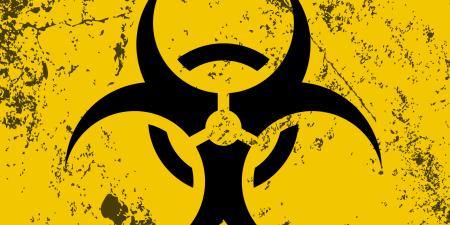The Need for the MSPHA
The H1N1 influenza epidemic of 2009 strained the American health care system. During this time, a highly communicable virus swept the nation, placing seemingly insurmountable burdens on already overcrowded and financially strapped hospitals. Accurate, timely communication between government and hospital authorities was critical, as were frequent updates to the public through media outlets. Physicians looked to the Centers for Disease Control and Prevention for ever-evolving screening, prophylaxis, and treatment guidelines. New governmental policies were developed and instituted. New York State, for example, mandated the vaccination of all health care workers against H1N1. This mandate was ultimately suspended largely due to lack of vaccine availability, but it demonstrates the effect that such epidemics may have on both health care delivery and public health policy [1].
Who has the authority to draft and enforce such legislation? Do individuals have the right to refuse mandated treatment, and, if so, what procedures are in place to acknowledge these rights without compromising the public’s health? Few will deny society’s responsibility to protect and maintain the public’s health. Public health law, “the study of the legal powers of the state to ensure the conditions of people to be healthy,” is essential in this function, because it structures the circumstances in which states and public health agencies provide services [2]. Unfortunately, not until unexpected disasters, biological threats, or infectious disease epidemics surface are the shortcomings of public health laws revealed; states are often left scrambling to develop legislation and policies as the situation evolves. Public health legislation varies state to state and is often outdated or not readily applicable to emerging outbreaks or contemporary chronic diseases [3, 4]. For example, one state’s legal quarantine authority is defined only for specific diseases, such as tuberculosis; during the SARS epidemic of 2003, new policy had to be instituted to expand that legal authority to include SARS [4, 5]. Furthermore, designations of legislative authority are generally vague, and policies do not reflect updated constitutional and ethical norms safeguarding individual rights and privacy [3, 4, 6]. One state’s legislation vaguely forbids those with “contagious” diseases to “expose themselves in public places,” without specifying whether these are airborne or bloodborne infections [7, 8]. Another state mandates that any person suspected of having a sexually transmitted disease who refuses examination and treatment must be immediately quarantined [7, 9].
The Institute of Medicine (IOM) raised concern over the patchwork of state regulations in its 2002 report The Future of the Public’s Health in the 21st Century [3]. The Department of Health and Human Services’ Healthy People 2010 report echoes the IOM, asserting that “the nation’s public health infrastructure would be strengthened if jurisdictions had a model law and could use it regularly for improvements” [10]. To answer this plea, the Public Health Statute Modernization Collaborative was assembled. This initiative, funded by the Robert Wood Johnson Foundation, brought together several public health scholars, governmental and national organizations, and five states to develop a model law. The result was the Turning Point Model State Public Health Act (the “Turning Point Act”), the most comprehensive model state public health act in United States history [4, 6].
The Turning Point Act, released in September of 2003, is a broad template which state and local authorities can utilize voluntarily to assess their internal laws. It provides a thorough, systematic legislative model for delegating authority, encouraging collaboration, and providing ethical and constitutional public health services. Broad in scope, the Turning Point Act was designed to be interpreted in the context of contemporary state public health systems. Of note, several areas of public health interest were omitted, such as provisions for seatbelt and tobacco use, health insurance legislation, or mental health and substance abuse policies [4, 6, 7].
The Turning Point Act at Work
Undoubtedly, the Turning Point Act has made a major impact on legislation in several states. Alaska passed an extensive bill based on the Turning Point Act, modernizing their surveillance and reporting, privacy, and powers of authority for public health services [11, 12]. In 2008, Colorado passed SB 08-194, the Public Health Revitalization Act [13, 14], Based largely on the Turning Point Act, it mandates newly defined leadership, enhances collaboration, and provides for vital public health services concerning infectious and chronic diseases. Several other states have passed less extensive but significant legislation. Louisiana’s H.B. 1321, passed in 2003, created an environmental health surveillance system [15, 16]. Montana’s S.B. 160, passed in 2003, requires its state Department of Health and Human Services to develop strategic plans for data collection, reporting, and performance measures [17, 18]. During the period between January 1, 2003 and August 15, 2007 (the time during which the Centers for Law and the Public’s Health tracked Turning Point Act legislation), 33 states introduced a total of 133 legislative bills, 48 of which were passed [19-21].
The Turning Point Act was a historic legislative initiative, advancing American public health law while allowing states to work independently and voluntarily. A much-anticipated attempt to rectify the many shortcomings in public health statutory law and regulations, it resulted in sweeping overhauls of public health infrastructure and legislation in several states. In the upcoming years, states will begin to implement the historical health reformative policies enacted by the Patient Protection and Affordable Care Act of 2010. It will be imperative that public health infrastructure, authority, and collaborations are well defined; The Turning Point Act will remain a useful and reliable model for doing so.
References
-
Daines RF. Dear administrator letter: suspension of flu vaccine mandate for health care workers. http://www.health.state.ny.us/diseases/communicable/influenza/seasonal/providers/2009-10-23_suspension_of_mandatory_influenza_immunization.htm. Accessed August 7, 2010.
-
Gostin LO. A theory and definition of public health law. Public Health Law: Power, Duty, Restraint. 2nd ed. Berkeley, CA: University of California Press, 2008. http://papers.ssrn.com/sol3/papers.cfm?abstract_id=1269472. Accessed July 9, 2010.
-
Institute of Medicine. The Future of the Public’s Health in the 21st Century Washington, DC: The National Academies Press; 2002. http://www.iom.edu/Reports/2002/The-Future-of-the-Publics-Health-in-the-21st-Century.aspx. Accessed June 15, 2010.
- Hodge JG Jr, Gostin LO, Gebbie K, Erickson DL. Transforming public health law: The Turning Point Model State Public Health Act. J Law Med Ethics. 2006;34(1):77-84.
-
SARS Control Program Authorization. Alaska Stat §18.15.350 (2004).
-
Turning Point Public Health Statute Modernization Collaborative. Turning Point Model State Public Health Act: a tool for assessing public health laws. September 16, 2003. http://www.hss.state.ak.us/dph/improving/turningpoint/PDFs/MSPHAweb.pdf. Accessed June 5, 2010.
-
Turning Point Public Health Statute Modernization Collaborative. Turning Point Model State Public Health Act: talking points. http://www.turningpointprogram.org/Pages/pdfs/statute_mod/phsm_talking_points_TP_act.pdf. Accessed June 20, 2010.
-
SD Codified Laws §34-22-5 (Michie 1994).
-
Mont Code Ann §50-18-107 (2003).
-
US Department of Health and Human Services. Healthy People 2010. http://www.healthypeople.gov/document/html/volume2/23phi.htm. Accessed August 17, 2010.
-
HR 95, 26th Leg, 1st Sess (Alaska 2005). http://www.legis.state.ak.us/basis/get_bill_text.asp?hsid=HB0095Z&session=24. Accessed June 26, 2010.
-
Alaska State Legislature. Bill history/action for 24th Legislature: HB 95. http://www.legis.state.ak.us/basis/get_bill.asp?session=24&bill=HB%20%2095. Accessed August 23, 2010.
-
The Public Health Revitalization Act. SB 08-194 (Colo 2008). http://www.state.co.us/gov_dir/leg_dir/olls/sl2008a/sl_406.htm. Accessed August 23, 2010.
-
Colorado General Assembly. Second regular session, 66th General Assembly. Table of enacted Senate bills. http://www.state.co.us/gov_dir/leg_dir/olls/sl2008a/2008aSLSEN.htm. Accessed August 23, 2010.
-
HB 1321 (Act 666)(Louisiana 2003). http://www.legis.state.la.us/bills/byinst.asp?sessionid=03RS&billid=HB1321&doctype=BT. Accessed August 23, 2010.
-
Louisiana State Legislature. HB1321 - 2003 Regular Session (Act 666). http://www.legis.state.la.us/bills/History.asp?sessionid=03RS&billid=HB1321. Accessed August 23, 2010.
-
SB 160 (Mont 2003). http://data.opi.mt.gov/bills/2003/billhtml/SB0160.htm. Accessed June 30, 2010.
-
Montana Legislature. Detailed bill information: SB 160. http://laws.leg.mt.gov/laws03/LAW0203W$BSRV.ActionQuery?P_BLTP_BILL_TYP_CD=SB&P_BILL_NO=160&P_BILL_DFT_NO=&Z_ACTION=Find&P_SBJ_DESCR=&P_SBJT_SBJ_CD=&P_LST_NM1=&P_ENTY_ID_SEQ=. Accessed August 23, 2010.
-
Centers for Law and the Public’s Health at Georgetown and Johns Hopkins Universities. The Model State Emergency Health Powers Act. http://www.publichealthlaw.net/ModelLaws/MSEHPA.php. Accessed June 26, 2010.
-
Centers for Law and the Public’s Health at Georgetown and Johns Hopkins Universities. The Model State Public Health Privacy Act. http://www.publichealthlaw.net/ModelLaws/MSPHPA.php. Accessed June 26, 2010.
-
Centers for Law and the Public’s Health at Georgetown and Johns Hopkins Universities. The Turning Point Model State Public Health Act: state legislative update table, as of August 15, 2007. http://www.publichealthlaw.net/Resources/ResourcesPDFs/MSPHA%20LegisTrack.pdf. Accessed June 5, 2010.



